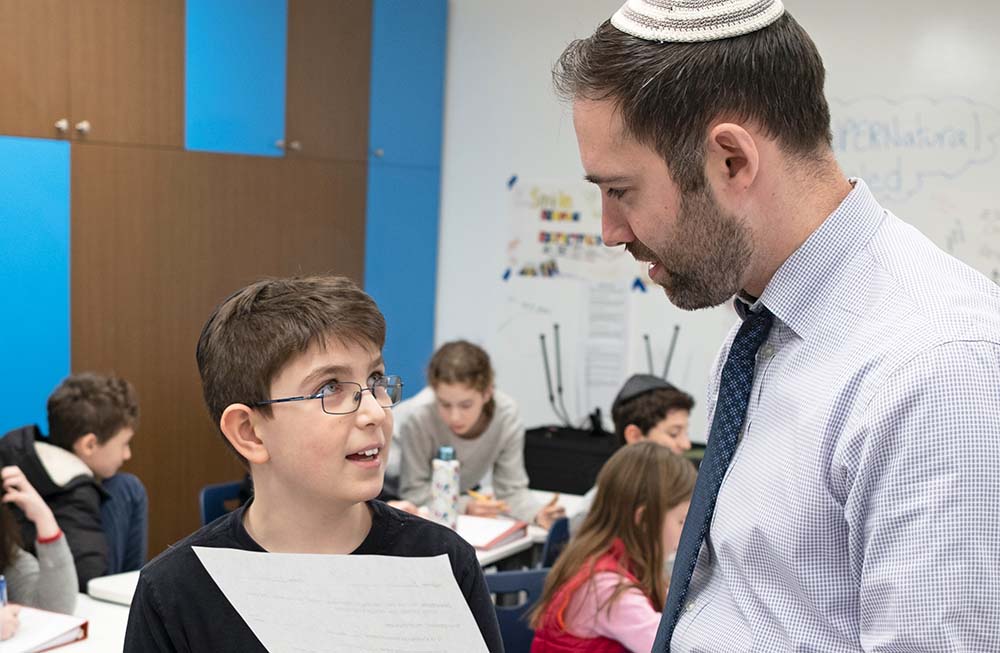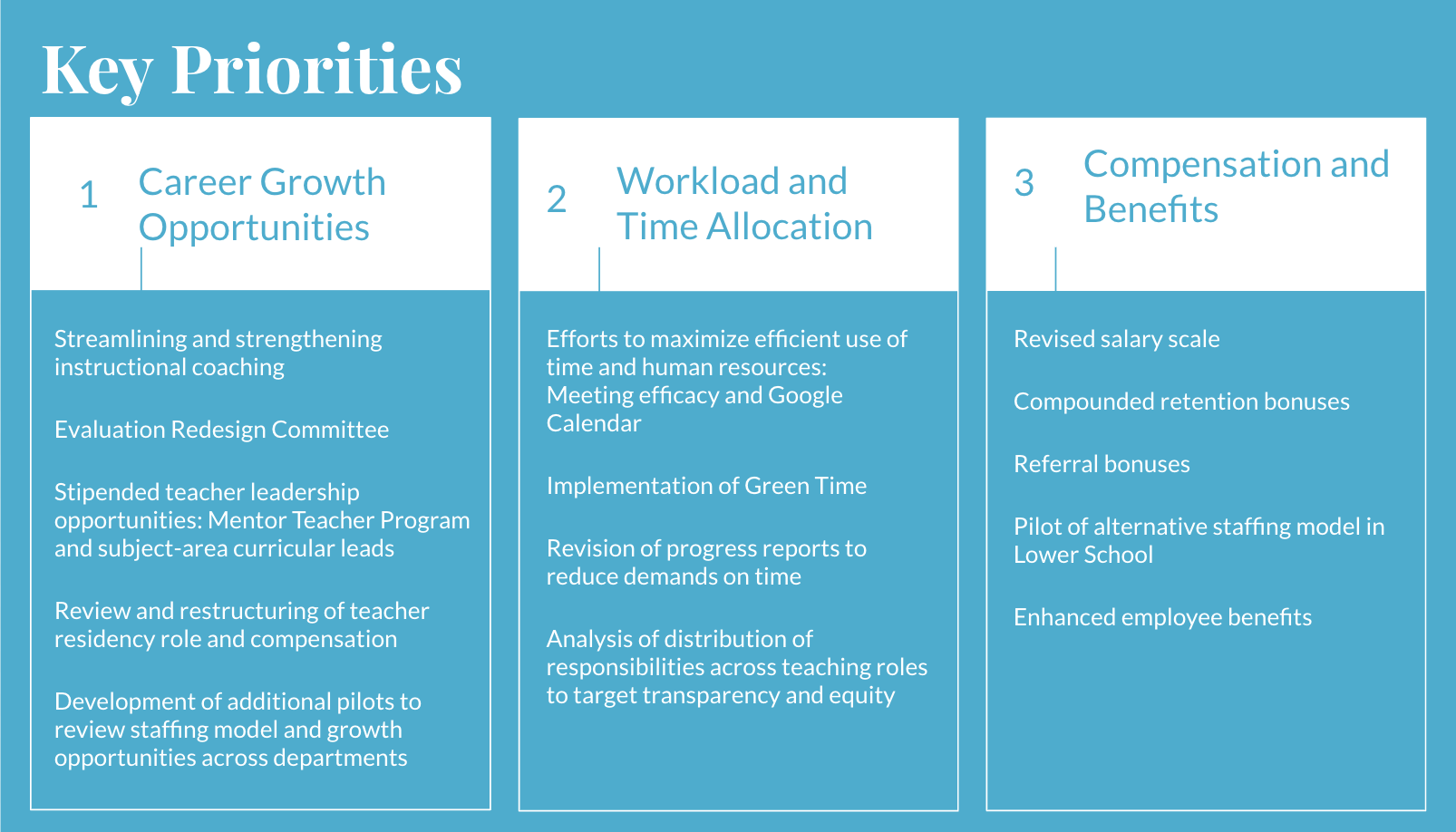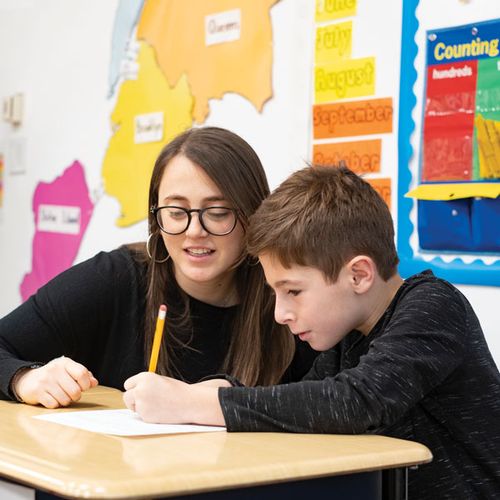Alongside the efforts of the taskforce, the senior administrative team simultaneously designed and conducted a number of studies in order to better understand what we were hearing and seeing. For example, in response to teachers’ concerns about the demands on their time, we ran a study tracking teacher use of time on a standardized spreadsheet for two weeks. This allowed us to aggregate data and analyze it with different metrics to see trends. For example, how much time was spent on lesson planning outside of school hours? How much time was spent on family communication? What were the discrepancies among teachers, and how might that help inform what levers we decided to pull to make changes in how teachers’ time was being allocated? The findings from this time tracking study led directly to the creation of specific interventions later on in the process.
Similarly, we conducted a “meeting audit,” in which teachers were asked to rate each type of meeting they participated in across key metrics. This helped us determine whether meeting frequencies could be changed or meeting practices could be improved to better achieve their intended purposes.
In addition to combing through the data from the Leading Edge survey, the taskforce members conducted detailed empathy interviews with Shefa staff members and implemented more targeted surveys on particular areas that begged further exploration. After unpacking this data, the taskforce identified the common areas of strength related to the employee experience at Shefa and the priority areas for improvement. By working to understand the root causes behind the challenges and by grounding observations in data as opposed to hearsay or anecdotal conjecture, the taskforce was able to make data-driven decisions about what to prioritize and how to move toward constructive next steps that were specifically targeting the areas of challenge.
This process also helped develop a deeper shared understanding among the taskforce members. Before making recommendations, the group members conducted external research to get ideas for what the latest best-practice research was in these areas and for how other schools or organizations were grappling with these challenges.
The taskforce’s findings painted a picture of a workforce that was working tirelessly to support a high-needs student population and deeply feeling the pressure and urgency of the school’s mission to close the gap and to prepare students to return to the mainstream. The school’s mission and the population cannot change—they are what makes Shefa Shefa. So what could be done to move the needle on the overwhelming sense of overwork that teachers were experiencing?
Overall, the taskforce’s findings suggested that the school’s leadership needed to better celebrate and reward the high level of investment on the part of its faculty and to create clear pathways for career advancement and sustainability. The key priorities that emerged centered around three buckets:
- Career growth opportunities
- Workload and time allocation
- Compensation and benefits
Designing and testing interventions
Following the recommendations from the taskforce, our senior administrative team spent the spring and summer evaluating the feasibility, necessary trade-offs and potential impact of each of the recommendations. Many of the recommendations were already on the road toward implementation, and the taskforce’s findings confirmed that we were on the right track. For example, we had recently formed a Faculty Evaluation Redesign Committee, a group of teachers and administrators who had begun designing a new teacher evaluation framework—a necessary precursor to creating clear and transparent growth trajectories for teachers. Similarly, we had already instituted stipended teacher leadership opportunities and retention bonuses for teachers. Other recommendations, such as ways of better protecting teachers’ time, were new ideas that we considered.
In August 2023, we presented to faculty our Climate & Culture Strategic Plan, the various efforts and initiatives that were underway to address faculty growth and retention. The chart below shows how the process led directly to interventions that helped us preserve a culture of excellence while incorporating boundaries to protect teachers and opportunities to reward them. Some examples: We established “Green Time,” protected break time each day when teachers could not be pulled for coverage or asked to join a meeting. We instituted a clear policy around “blackout hours,” where email communication could only be used for time-sensitive emergencies. We trained and required everyone to use Google Calendar in consistent and standardized ways, so that we could have a system for more equitable and transparent use of time.








